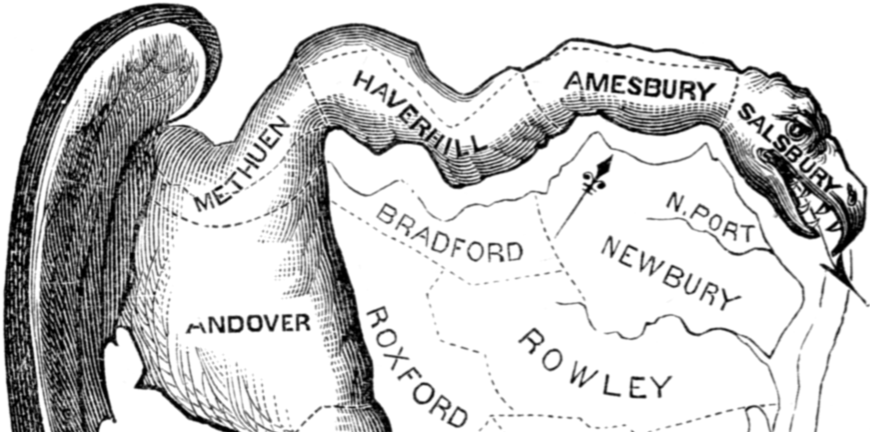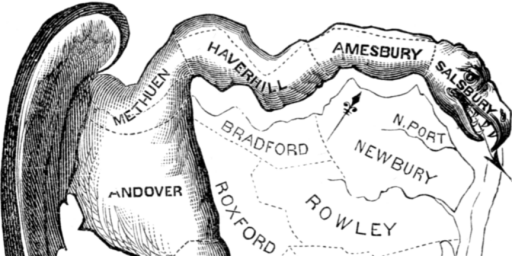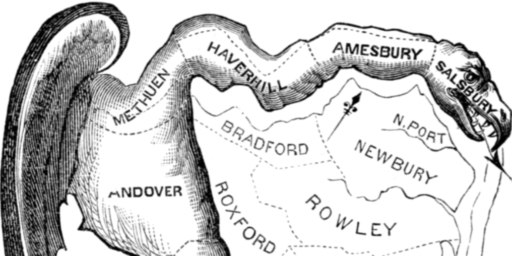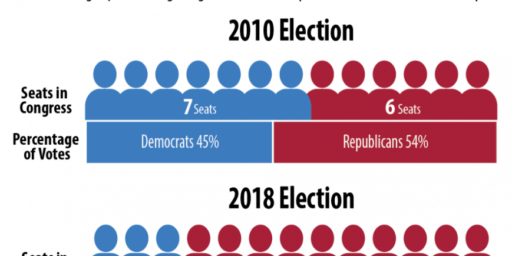SCOTUS Punted On Partisan Gerrymandering, But The Issue Isn’t Going Away
The Supreme Court avoided ruling on the merits of two partisan gerrymandering cases, but the issue will be back before them sooner rather than later.

As James Joyner noted yesterday, the Supreme Court essentially punted on the central issue in the two political gerrymandering cases arising out of Wisconsin and Maryland respectively. In one case, Gil v. Whitford, the Court held that the Plaintiffs in the case had failed to demonstrate that they had legal standing to challenge the entire redistricting map in Wisconsin. In the second case, Benisek et al v. Lamone et al.,the Justices ruled that the Plaintiffs in the case had failed to demonstrate the grounds necessary to receive a Preliminary Injunction from the District Court to prevent elections in Maryland’s Sixth Congressional District based on the 2011 map. Both cases were remanded back to the relevant District Court for further proceedings. In the Gil case, that is likely to involve an effort by the Plaintiffs to revive their claims based on the Supreme Court’s ruling in a manner that meets the standing requirements of Article III of the Constitution. In Benisek, it is likely to mean that the case will go forward to an eventual final ruling on the merits of the Plaintiff’s claims that the District was deliberately drawn to dilute the voting power of Republicans in western Maryland by incorporating more Democratic areas of the state into the district. Both cases, then, could eventually make their way back to the Supreme Court, but that’s likely to take at least a year or two between District Court proceedings and appeals to the relevant Circuit Court of Appeals, which would be the Seventh Circuit in the Wisconsin case and the Fourth Circuit in the Maryland case.
As Galen Druke notes at FiveThirtyEight, though, this isn’t the end of the legal issues surrounding partisan gerrymandering and the Court will likely be dealing with this again in the relatively near future:
Roberts kept his opinion focused on the specifics of the Wisconsin case and did not lament the effects of gerrymandering or offer advice for future plaintiffs. But Justice Elena Kagan did. In her concurring opinion, she wrote that partisan gerrymandering “violates the most fundamental of all democratic principles” and suggested how the Wisconsin plaintiffs might litigate individual districts going forward, such as providing alternative maps that are less packed and cracked.
Reformers can’t be sure that the path she laid out appeals to a majority of the court, though, because Justice Anthony Kennedy — a crucial swing vote — did not concur in Kagan’s opinion. If the court does ultimately rule partisan gerrymandering to be unconstitutional, it will likely be because Kennedy joins the four liberals in an opinion. Tea-leaf readers have pointedto the lack of resolution on gerrymandering as evidence Kennedy may stick around for another session. If that’s the case, it’s some solace to reformers, as another strict conservative on the court could make their goals all but impossible.
In any case, nobody — liberal or conservative — got the resolution on partisan gerrymandering they were looking for today. In fact, we learned very little overall about what the court thinks of partisan gerrymandering. But it won’t be long before these tough questions are back before the court.
At the moment, there is one case that is far enough down the “pipeline” of Federal Court litigation that could bring it before the Supreme Court within the next year or so, perhaps even in time to be heard by the Justices at some point during the term that begins next October. That case, Common Cause et al. v. Rucho, arises out of North Carolina and, like the Wisconsin case, involves a challenge to the entirety of North Carolina’s Congressional map on the ground that it was unfairly drawn by a Republican-dominated legislature to benefit Republicans. In a ruling in January, a three Judge panel of the U.S. District Court for the Middle District of North Carolina struck down that map, ruling that the map was unconstitutional because it had been unfairly drawn for the primary purpose of achieving a partisan advantage for Republicans. In the opinion, the Court cited evidence of partisan intent in the comments of the legislators at the time it was imposed as well as the extent to which the map clearly benefited Republicans over Democrats to the point where the GOP now holds ten out of the state’s thirteen Congressional seats notwithstanding the fact that this isn’t even close to being representative of the population of the state as a whole. Specifically, the Court found that the legislature had been”motivated by invidious partisan intent” in drawing the map and that, as a result, violated the 14th Amendment’s guarantee of equal protection. In reaching this decision, the judges applied the same three-part test that had been aplied by the District Court in Whitford, finding that the map (1) was drawn with the specific discriminatory intent of benefiting one political party and harming the other, (2) resulted in a demonstrably discriminatory effect in that it created a map that created a decided partisan advantage for the party that drew the map and, (3) that there was no legitimate justifiction for this outcome other than the conclusion that it was drawn with the intent of discriminating against one party and in favor of the other.
In its initial order, the panel had given the state legislature in Raleigh until January 24th to draw a new map or risk having one drawn by the Court itself. As permitted by relevant Federal Rules, the Republican-controlled legislature first sought to obtain a stay on the Court’s ruling from the Supreme Court. That request was granted, and the case is now pending before the Supreme Court as a petition requesting a review of the case on the merits. The Supreme Court has yet to rule on that request but seems likely to dispose of it in some way prior to the end of the current term at the end of the month. This means that we could see this North Carolina case on the Court’s docket, and the political gerrymandering issue back before the Court, sometime early in the October 2018 term. In the meantime, the existing North Carolina case will remain in effect for the 2018 elections.
In addition to this North Carolina case, it’s possible that the developments in the Wisconsin and Maryland cases may inspire other parties to challenge the Congressional maps in their states, although the fact that we’re only a few years away from the redistricting battles that will come after the 2020 Census could mean that many of the groups behind these lawsuits will hold off on their challenges until the issues are riper. Additionally, if the Court does accept the North Carolina case for review and ends up siding with the Plaintiffs even if only to a small degree that will likely motivate people to challenge the maps in their own states. So, while the Court managed to sidestep the merits in the two cases it ruled on yesterday, this issue isn’t going away any time soon.




I’m betting they remand Rucho in light of Gill to deal with the whole state vs. specific district standing issue.
But you are right, this is coming back and fairly quick.
The reason this issue will keep coming up is that internet records are discoverable.
Any partisan crowing online will be seen as intent. And rightly so, no matter who does it.
Republicans were smart in 2010, pouring money into any and all state races for the intent of redrawing maps. But the worm may turn very soon.